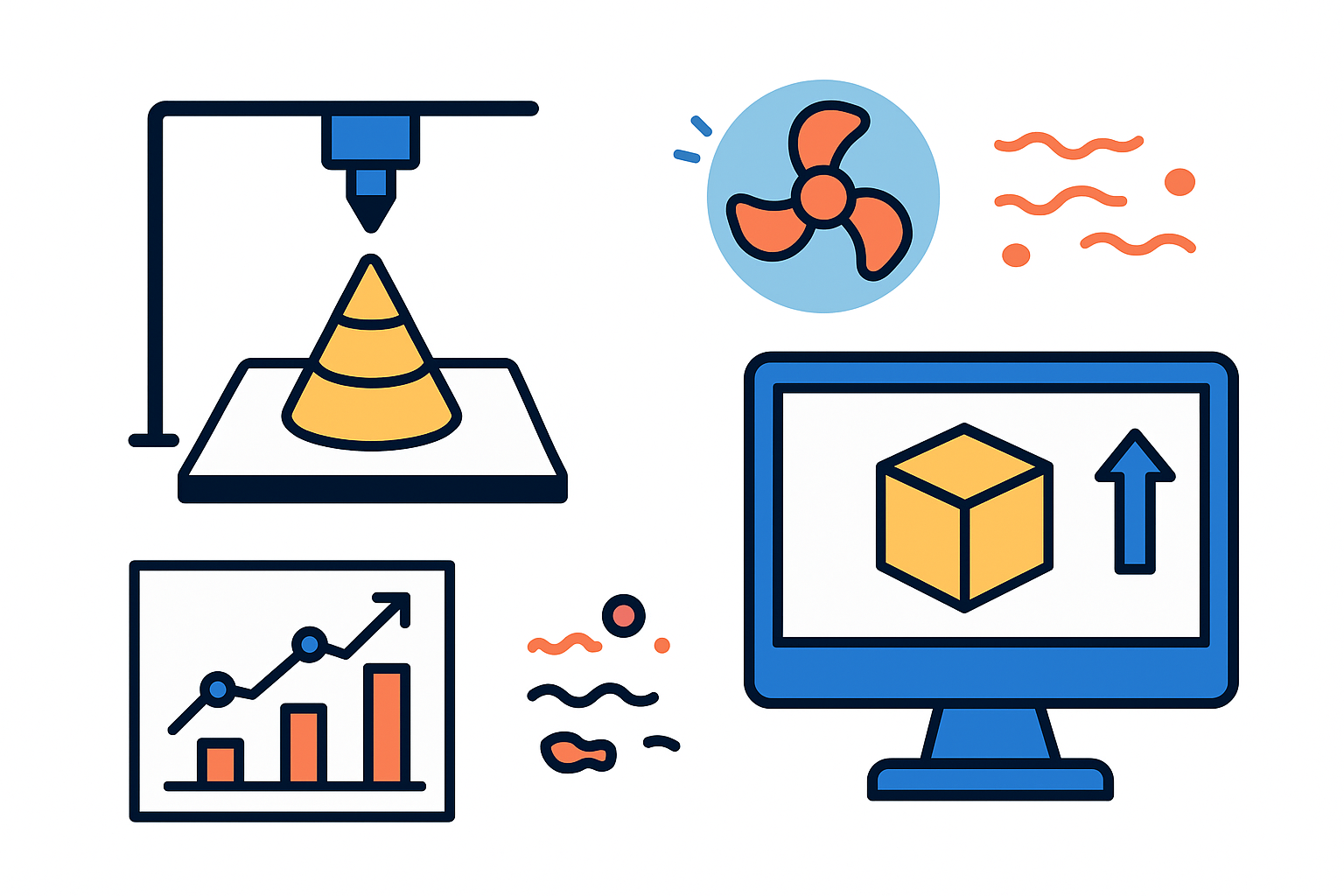Why “high resolution” isn’t everything
Many beginners – and even clients – believe that setting a low layer height in the slicer is enough to guarantee a beautiful print. But the truth is more complex. High-quality prints depend on a whole chain of factors, and “high resolution” without optimization can lead to disappointment rather than improvement.
1. Layer height: smaller isn’t always better
Lower layer heights can improve surface smoothness, but:
- significantly increase print time,
- can be more prone to heat-related defects,
- won’t help if the input STL is low-quality or faceted.
If the model itself lacks detail, even 0.1 mm layers can’t create a smooth or sharp result.
2. STL model quality: it all starts here
The STL file defines how curved surfaces are approximated by polygons. If it’s exported with low resolution, you’ll see flat segments no matter how finely you print. Always export with the highest quality settings (e.g. “Fine” in Fusion 360).
For high-end parts, we often remodel the object or request the original CAD data for best results.
3. Cooling: sharp edges need airflow
Insufficient cooling causes melted details and rounded edges. This is especially true for PLA, but also relevant for PETG, ASA, and other materials:
- small details overheat without cooling,
- plastic flows too much and deforms,
- letters or fine shapes may become unreadable.
Professional printers like ours use powerful dual fans and dynamically controlled cooling depending on layer geometry.
4. Retraction & movement precision: avoid the stringing
Retraction is the filament pull-back when the nozzle moves between points. Poorly tuned retraction can cause:
- stringing or plastic “webs”,
- drips and blobs in unwanted areas,
- messy surfaces that require more post-processing.
Our Bambu Lab printers use advanced pressure control and tuned retraction profiles to ensure clean prints even on complex geometries.
5. Model orientation: angle matters
The way a model is oriented in the slicer can affect:
- how visible surfaces look,
- how much support is needed,
- mechanical strength of the part.
Some parts are better printed upright, others flat – we always choose based on geometry and end-use requirements.
6. Printer vs. experience: it’s not just the machine
Modern printers are powerful and precise, but without the right settings and experience, the results may fall short. Knowing when to adjust materials, rotate a model, or tweak the G-code is key.
That’s why our custom 3D printing service always includes expert preparation to match your model and goals.
Want a truly precise print?
Don’t just send the STL – if possible, also include your CAD model, drawing, or a photo. We’ll help optimize the geometry or remodel it from scratch if needed. Check out our project references for real examples.

